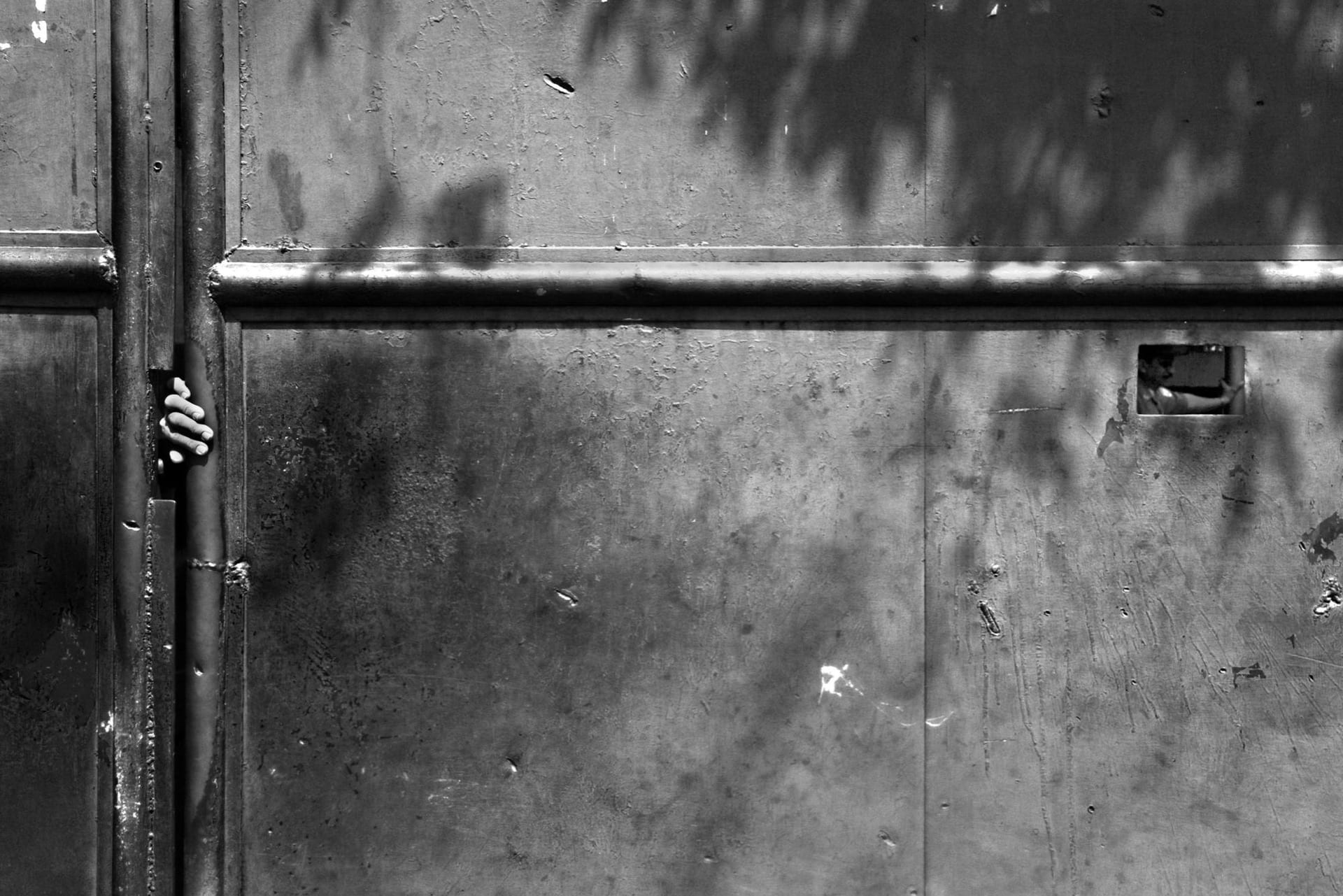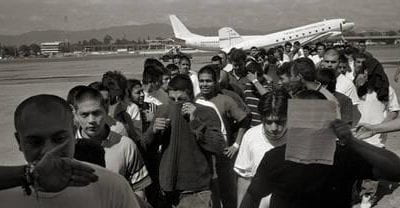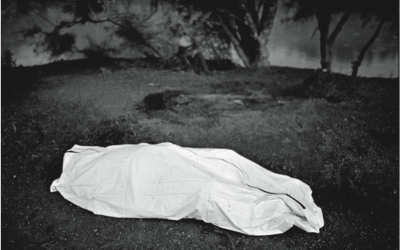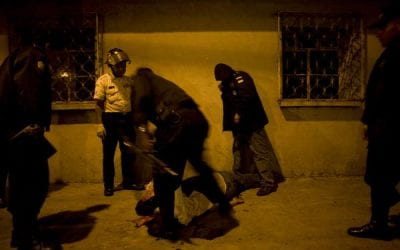The Transformation of Street Gangs in Central America
Organized Crime, Mano Dura Policies and Lost Opportunities
I met Franky approximately ten years ago, when he came to my office at the University of Central America in San Salvador. Franky (his name has been changed here to protect his identity) was a newcomer in a non-governmental organization working to help gang members and former gang member to abandon violence and drugs, and to train them in job hunting in different fields. He had been recently deported from the United States, and he showed up at the meeting featuring the full attire and gear of his new job as a guard in a private security company. Franky was a large man, too hefty and mature for the average gang member—who would be scrawny and very young. Yet, he was a “calmado” gang member and also a private security guard. While in the United States, he had joined the Eighteenth Street Gang, one of the main street gangs in Southern California enrolling children of Salvadoran migrants and political refugees from the twelve-year-long civil war. As did many of his peers in the United States, Franky found an unreceptive environment. The gang, full of fellow countrymen by then, became his best milieu for growing up and thriving.
When he was deported to Central America, he decided that he did not want to have more problems, and using some connections, landed a job in one of the largest private security companies in El Salvador. He also found out about this NGO comprised of former gang members and decided to spend part of his time to help other deported and stranded youth to find jobs and abandon violence. However, after some months doing shifts guarding bank branches, Franky was fired when his supervisors found out that he had tattoos informing about his allegiance to one of the major gangs. After many unsuccessful attempts to find a new job, he devoted his full-time to the NGO, where he quickly became the director of rehabilitation programs and a key active member.
As the person responsible for helping other gang members to “calm down” and get jobs, Franky became one of the most successful members of the organization. He is in constant meetings with government officials, funding agencies and private company representatives. Youngsters from different gangs look up to him, as he was always ready to lend a hand, help their families in distress, and get them a job or a training seminar spot. One of his insignia projects was the establishment of a small bakery in one of the most gang-besieged neighborhoods. The bakery, entirely run as a business cooperative by gang members in the process of rehabilitation, quickly became a sanctuary for young gang members who wanted to stay away from violence and drugs, as they could make money and maintain their families from the bakery’s austere wages. The experiment was not easy, but the small business managed to survive. Gang members who wanted a change finally started to believe that rewarding—although modest—life outside the gang was possible without facing suspicion, discrimination, violence and death.
As Franky and his organization were preparing to open similar projects in other troubled neighborhoods in the city, the Salvadoran government announced the launch of the Mano Dura Plan (Heavy Hand Plan), a crackdown program on gangs modeled after a similar plan in Honduras. The national crackdown was announced from one of the neighborhoods where another bakery project was planned; the existing bakery quarters quickly became ground zero for the onslaught against gangs and marginalized youth. Overnight, and under an all-out-war-against-gangs atmosphere, the bakery lost its clientele: people from the neighborhood did not want to be seen helping gang members. It also lost its labor force: most of the young apprentice bakers were detained or subjected to constant harassment by the police. The bakery itself endured several raids that ended in nothing but lost products and frustrated staff. After some months of constant harassment and declining sales, it went broke. Following the fate of many other gang prevention and rehabilitation programs, the project was closed, the equipment sold, and the participant youth had to deal with the prospects of going back to the streets and facing both rival gangs and the police.
Franky also had to face the street in a way. Confronted with the waning support for non-repressive programs, the constant police persecution to his pupils and peers, and his organization in near disarray as a result of the mano dura crackdown, he started to spend more time on the street, at the edge of the dynamics that were turning the gangs more cohesive and violent. While doing this, he found himself involved in a homicide. Although he claims innocence to this day, he was indicted and sentenced for complicity in the murder of a fellow gang member. He was sent to a national prison, full of young people coming from gangs all over the country. That penitentiary, as well as many others overcrowded by gangs affiliated with the same criminal network, ended up being a transnational node for criminal activities, from where extortion rackets, drug trafficking, and murder rings were conducted.
I have not seen Franky since his detention some years ago, but according to press reports, he has become one of the national leaders of the second largest gang network in El Salvador from his internment site.
The story of Franky illustrates the complexities of the rising phenomenon of organized crime in the region. It suggests that the violence and crime that are overwhelming the battered Central American nations are the result of many complex conditions, many lost opportunities, and also very bad security policies. Youth gangs, locally known as maras, have evolved to become intricate racketeering networks that are taking the violence to civil-war levels, and devastating the poorest countries in the Latin American region. To be sure, maras are not the only criminal groups operating in the region, but they have become one of the most pervasive and overpowering organizations.
Central American maras are a vast network of groups of people associated with the identity franchises of two street gangs that had their origins in the city of Los Angeles in the United States: the Mara Salvatrucha Thirteen (MS-13) and the Eighteenth Street gang (Barrio 18). However, the development of these groups in Central America never depended upon American dynamics or directives. In El Salvador, as well as in Guatemala and Honduras, they went on to develop independently and form transnational networks involving powerful crime rackets.
According to police figures, an estimated 21,000 young Salvadorans belong to these transnational gangs, as well as 30,000 in Guatemala and Honduras. They are responsible for a significant share of the surge in criminal violence in the region since the late-1990s. As gangs have become institutionalized in Central America, the violence they exercise has increased and turned more complex and organized. During most of the 1990s, the maras’ criminal activities could be described as mugging, pickpocketing, shoplifting, brawling and other rather low-level felonies. Occasionally, they would engage in deadly assaults and robberies. Drug consumption was limited to marijuana, and early gangs used industrial glue as an inhalant to get high. Cocaine and other hard drugs did not seem to be in the repertoire. Since the late 1990s, however, gangs got involved in more serious types of crimes. Research reports point out that gangs were involved in murders, rapes, assaults, and robberies; some of the cliques started to collaborate systematically with drug trafficking cartels, began to consume hard drugs and got involved in the firearm trade more regularly.
However, the definite push for the organization of gangs into big-time mafias came from the governments. The states’ repressive policies, designed to crack down on gangs, contributed unexpectedly to their further expansion across the region in the early 2000s. During those years, governments implemented a series of zero tolerance programs. They reformed penal laws to ban groupings of young people and to permit the imprisonment of suspicious-looking youth. For instance, in El Salvador alone more than 30,000 arrests of gang members were made in a two-year span, which had the unintended effect of transforming prisons into new centers of gang life. The overall murder rate rose from 40 to 62 per 100,000 people between 2003 and 2006. By 2010, homicide rates have reached 71 assassinations per 100,000 inhabitants.
Gangs, in response, prepared for an all-out war against the governments. The mano dura crackdown moved youth gangs toward a more organized type of violence and the development of complex command structures. From prisons, gangs developed the connections that allowed them to get resources, drugs, and money. Maras started to extort people at the schools, local convenience stores, transport unions, informal vendors in the streets, and neighborhood clinics. In fact, according to the Salvadoran police, 70 percent of the arrests under the charge of extortion in 2009 were carried out against gang members. During the same year, the Guatemalan police reported that gangs collected four million dollars just in the suburban community of Villa Nueva in Guatemala City. Gangs were able to raise that amount just from “taxes” imposed on small businesses and public transport units that operated in the area.
With the move and settlement of Colombian and Mexican drug cartels in Central America, disputes for new domestic drug markets increased, as well as the need for “criminal labor.” Gangs took over the local “leftover” marketplaces and worked as sicarios for groups such as the Mexican Zetas and the Familia Michoacana. According to a survey conducted among gang members in Salvadoran prisons as early as 2006, 27 percent of gang members who had collaborated with drug cartels have worked as hit men, 21 percent have smuggled arms into the country, and 17 percent have participated in car hijacks.
The transformation of gangs into organized crime groups has also changed the dynamics in the neighborhoods they control. Law enforcement specialists and community workers complain that most communities affected by gangs have turned into what they call the “social base” of gang cliques. That is, they have become non-gang groups that support and protect local mobs from anti-crime initiatives and police operations. Because youth gangs have accumulated resources and influences, they have also become the new patrons and benefactors of the deprived barrios where they dwell. Despite the criminal activities and the violence that are usually staged by the criminal gangs, people are collaborating and sheltering these organizations because they provide job opportunities in the criminal economies (extortion collectors, couriers, watchmen, storeroom guards, etc.) as well as in the legal circuits (bus drivers, clerks, secretaries, etc.). They also assist dispossessed neighbors to make ends meet, and even finance small local development projects such as corner stores serving the community, or the repairs of the sports court and the main community roads.
In so doing, gangs have created buffer groups that not only act against police activities, but also function as a competition for underfunded prevention and rehabilitation programs that abound in the impoverished Central American slums. Gang-funded small businesses expand the economic activities of the gang, serve as money-laundering sites, and erode the community commitment to the law.
Despite the resounding failure of the mano dura programs, governments in the region keep investing their main efforts in suppression and zero-tolerance programs. They keep militarizing the responses to the organized-crime problem, creating special operations squads, and empowering their arsenal over the underfunded community policing units. Although organized-crime suppression strategies ought to be a part of the portfolio in the struggle against crime, recent history has shown that plain repression policies have made things worse. For most of the youths and the people who work with them, the responses coming from the governments should not be putting them in the overcrowded and corrupting penitentiary system, but expanding the economic opportunities presented by the national institutions and the private sector.
Franky and many other people working against crime were right then, when they committed themselves to a modest but promising bakery in the middle of gangland. Governments were in the wrong when they pledged to crush part of their own youth.
Spring 2012, Volume XI, Number 3
José Miguel Cruz is a visiting professor at Florida International University in Miami. He was the director of the University Institute for Public Opinion at the University of Central America in San Salvador, where he conducted a number of research projects on gangs in the region.
Related Articles
Transmigration in Mexico
English + Español
En abril del 2010 una delegación oficial de El Salvador encabezada por Francis Hato Hasbún, el Secretario de Asuntos Estratégicos del gobierno del Presidente Mauricio Funes, visitó México…
Organized Crime as Human Rights Issue
English + Español
It was a horrifying scene— 72 people murdered all at once. One survivor bore witness to the massacre. The dead were migrants, mostly Central Americans; 58 men and 14 women trying to…
First Take: Organized Crime in Latin America
English + Español
Dealing with transnational organized crime is now an official part of U.S. security strategy.
A strategy document, issued by the White House in July 2011, speaks of organized crime groups…





